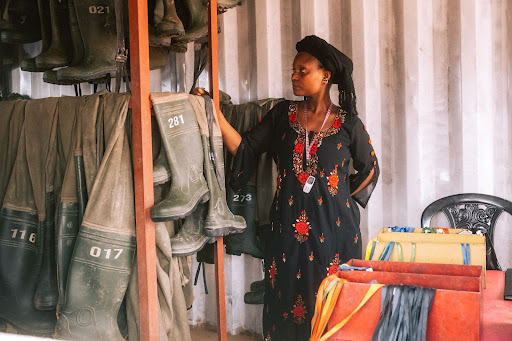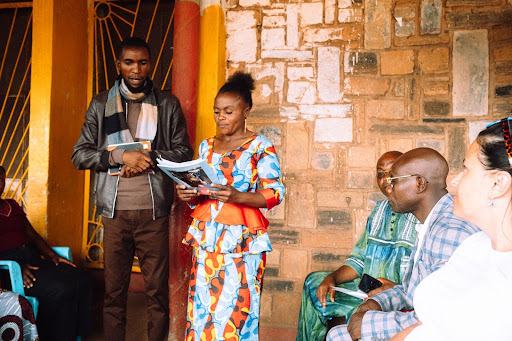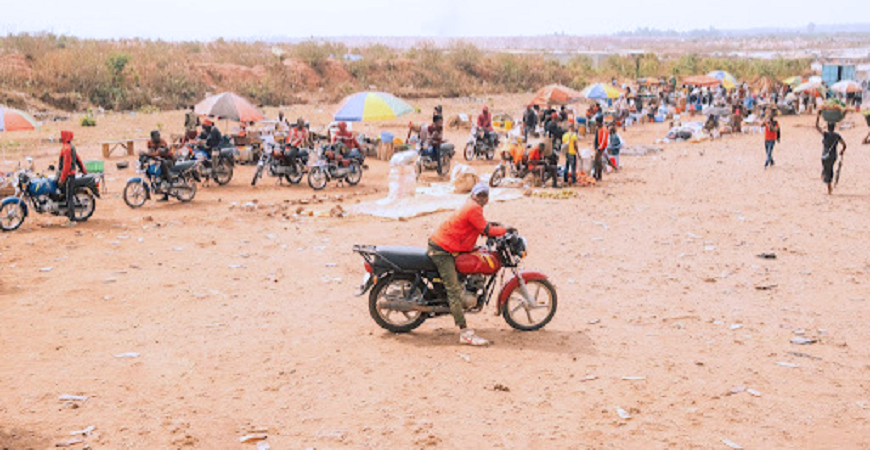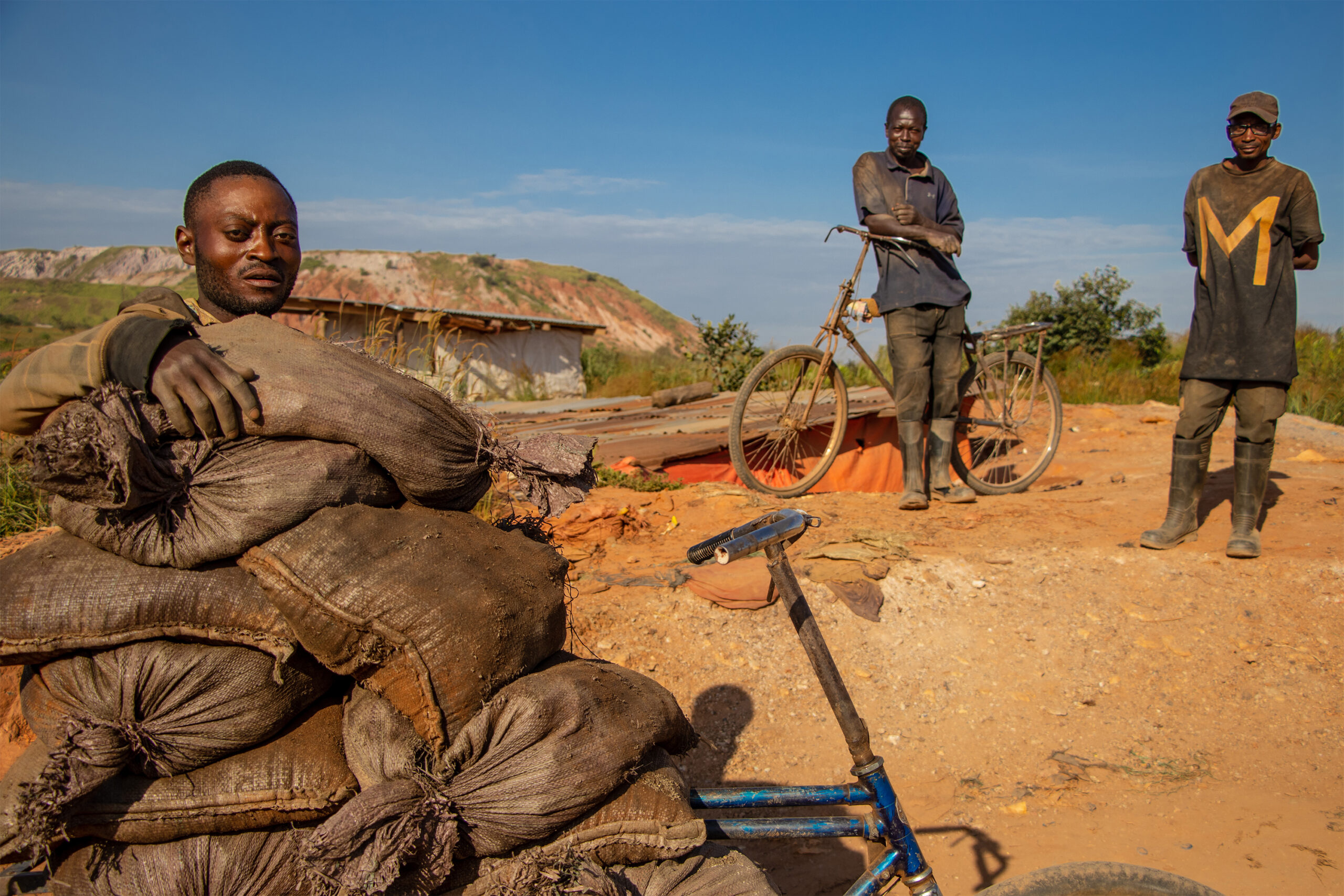My name is Andrina Beaumond and in early November 2022, I joined the Fair Cobalt Alliance (FCA) as Senior Stakeholder Engagement and Programme Manager.
On my very first day in my new role, I took part in a week-long delegation visit to Kolwezi, in the DR Congo. A week that turned out to be an eye-opening experience. The visit was organised by the FCA, bringing together key actors across the cobalt supply chain – a Delegation of around 50 individuals at peak times. The strength of this delegation resided in the diversity of its composition: commodity trading and mining companies, EV technology manufacturers, civil-society organisations, and representatives of the Congolese government.
Being new to the organisation and new to the sector, this trip was a personal journey that took me to the very heart of our modern, connected lives: cobalt mining sites. The chances are that you are reading this blog on a device that contains cobalt since this mineral is a key component of the rechargeable lithium batteries that power your smartphone, tablet or laptop. And yet, do you know where it really comes from?
At the source, where it all begins
Over half of the world’s supply of cobalt comes from the Democratic Republic of Congo and about 10-20% of Congo’s Cobalt is extracted by artisanal miners. So, it’s only fair to say that the modern globalised world directly benefits from artisanal cobalt miners.
Artisanal and small-scale mining (ASM) is the second largest livelihood after agriculture across Africa and plays an important economic role. However, issues associated with poor practices in mining, processing and marketing of minerals, the absence of well-enforced legal frameworks and secure rights for miners as well as conflicts over access and land-use often associated with ASM, present major challenges for governments and regulatory authorities in countries where these activities take place.
In the DR Congo, there has been a growing momentum around the need to resolve cobalt’s conflicted dynamics and attempt to formalise the ASM sector. If it succeeds, it could be a game changer for the cobalt market, and an even bigger game changer for the millions of people working globally in artisanal mines.
FCA is forging win-win solutions
For the region to prosper and benefit from its resource endowments, the FCA aims at expanding its activities to the mining community rather than focusing exclusively on on-site improvements. This holistic approach aims at tackling the root causes of poverty and child labour in the region. As a result, our field trip took us from mine-sites to local communities.
At the Kamilombe mine-site, operated by the CMDS cooperative, the Delegation witnessed the work carried out by the FCA to constructively address safety and security issues, through security signage, health and safety demonstrations and a PPE provision programme for washer women.

Showing the Personal Protective Equipment (PPE) issued for women-washers. Photo by Robin Knuth-Sushi bikes
Outside of the mine sites, we learned from the community the central role played by the FCA’s saving groups in fostering access to economic alternatives in the artisanal mining communities. Some 14 saving groups were set up, catalysing approximately 350 people and demonstrating how communities and diverse actors can become more resilient in the face of economic and climate related shocks and stressors. Saving groups also reduce the need for children’s financial contribution to household incomes, thereby fostering access to education.

The savings groups have empowered many in the community. Photo by Robin Knuth-Sushi Bikes
The Delegation also went to assess a school renovation project financed by the London Metals Exchange (LME), a partner programme aligned with the objectives of the FCA, with the aim of increasing school enrollment and retaining students to support an educated and entrepreneurial young generation.
Lastly, and with the involvement of local authorities, the FCA Delegation visited the soon-to-be-finalised Musompo trading center. Musompo trading centre will be a convergence point for many. Photo by Robin Knuth-Sushi Bikes
Musompo trading centre will be a convergence point for many. Photo by Robin Knuth-Sushi Bikes
Such a trading centre, supported by the Congolese government, will provide a basis for transparent and fair buying practices of critical minerals, thereby protecting cooperatives from complex and unfair compensation schemes at the depots. If implemented correctly, the trading center would furthermore support wider community development through fairer mineral trading practices and prices.
During the week, the Delegation met with the local authorities such as the Minister of Education and Social Affairs, the Minister of Interior and the Chief of Staff of the Governor. Those meetings reiterated the importance for all actors to be involved in driving change for those at the beginning of the Cobalt value chain.
Conclusion – a journey that is just beginning:
While the FCA applauds the commitment from the current Congolese government in its formalization efforts, it can only stress that ASM must transcend political agendas and remain at the heart of the DR Congo’s development plans despite the upcoming elections.
As the cobalt demand is expected to grow by 450% by 2050, compared to 2018, turning our backs on artisanal and small-scale mining workers is not the answer. ASM contributes to many of the SDGs and with inclusive, comprehensive formalization, the global community can ensure ASM positively impacts local communities. For this to happen, actors across the supply chain need to be involved to shape the new narrative on fair cobalt from the DR Congo. After witnessing the scale of cobalt ASM, I wondered what supply chain actors who are not based on the ground can do to support diggers, washer women and the mining-communities at large.
What can consumers like you and I do?
Actors across the supply chain, including consumers, need to collaborate to enable and accept the responsible production and supply chain integration of artisanal mined cobalt. Consumers can request downstream brands to enquire about the origin of their cobalt, and encourage them to join collective action platforms, such as the FCA, to raise examples of how ASM minerals can be sourced responsibly.
What can companies do?
Companies should map their supply chain to the mine, and then take part in efforts to improve issues along their supply chain. By joining the FCA, companies support ASM improvements overall. Traceability is a key point: knowing where your minerals come from is only one component of due diligence. Traceability is only the start. It can be seen as the easiest choice to only work with large-scale mining (LSM) sources; but in the case of cobalt in the DR Congo, ASM-sourced minerals can end up in the supply chains of LSM companies. This is why we need downstream companies to commit to sourcing from ASM and support formalization efforts.
The FCA will keep the drums beating around ASM Cobalt to ensure this momentum is not just a short-lived one but rather an on-going discussion that will lead to positive outcomes for the communities and the green energy revolution, ensuring it leaves no-one behind. We shall keep the discussions going with our members and on our website.
You are also welcome to meet us in person at the Investing in African Mining Indaba (6-9 February 2023), the Cobalt Congress (9-11 May 2023) and the DRC mining week (14-16 June 2023).



